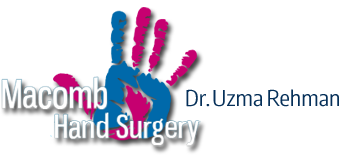In The News:
Hand Doctors Return Sense of Touch with Prosthetic Hand
It is easy to take for granted, but the ability to feel, touch, and grasp with one’s hand is a truly remarkable ability. For all of human history, people who have had their hands or arms amputated have longed for a way to regain this ability. While hand doctors have been able to restore an element of functionality to their patients’ hands through prosthetics, amputees have never been able to regain the physical feeling of touch. Until now.
Scientists at the university of Utah have developed technology that can return an element of feeling to patients who have lost their hands or arms. And while the technology is still in its early stages, providing hand doctors with the ability to mimic the way their patients feel and sense the world around them is a revolutionary development.
How Hand Doctors Implement Touch to Prosthetic Hand
Through a collaboration with some of the top biomedical engineers and neuroscientists in the country, hand doctors are now able to fit their patients with a prosthetic arm that allows them to regain the feeling of touch. Researchers at the University of Utah developed an interface called the Utah Slanted Electrode Array (USEA), which allows for communication between the prosthetic hand and the sensory and motor nerves that exist in the patient’s arm.
For the USEA to work, hand doctors must surgically implant a network of electrodes next to the patient’s nerve fibers. By selectively stimulating small subsets of nerve fibers, a wide range of sensory and motor signals are sent between the nervous system and the prosthesis. In this way, the operator is able to control the device through their own thoughts.
Hand Doctors Create Prosthetic That Allows Patients To Feel
Thanks to these remarkable developments, hand doctors have been able to return the sensation of touch to amputees who have lost their hands or arms long ago. One such patient, Kevin Walgamott, on whom the USEA was tested lost his arm 15 years ago. Hand doctors fitted Walgamott with a prosthetic called the LUKE (so-named for the owner of science fiction’s most famous prosthetic hand, Luke Skywalker) which in conjunction with the USEA, was tested over a 14 month period.
The results of the test had hand doctors astounded. Walgamott was not only able to feel things with his LUKE prosthetic, but could also differentiate between touching soft and hard objects. Through the added sensitivity of the LUKE hand and the USEA interface, Walgamott was capable of movement far more complex than was ever allowed through previous prosthesis.
Through the LUKE hand and the USEA interface, the patients of hand doctors who have undergone amputation have demonstrated the ability to perform movements such as delicately lifting a fragile box, picking grapes, and stuffing pillows into pillow cases.
While losing a hand is indisputably difficult for anyone to endure, thanks to incredible advancements in prosthetic technology, hand doctors are able to provide better care than ever to their patients. This technology is still in its infancy, and is currently only available at the present time in scientific trials. As these technologies are refined, it is hoped that hand surgeons everywhere will soon have access to this amazing new type of prosthetic.
Top Detroit Area Hand Doctor
If you are suffering from an injury or pain in your fingers, wrist, elbow or arm, contact board certified Detroit area hand surgeon Doctor Rehman for a comprehensive evaluation and consultation. Your hands are vitally important to everything you do. Rapid detection, diagnosis, and treatment is the most effective way to ensure you heal completely, and do not suffer long term consequences.
Doctor Rehman will assess your individual condition, and offer the best state-of-the-art treatments that are best for your hand injury or illness.

